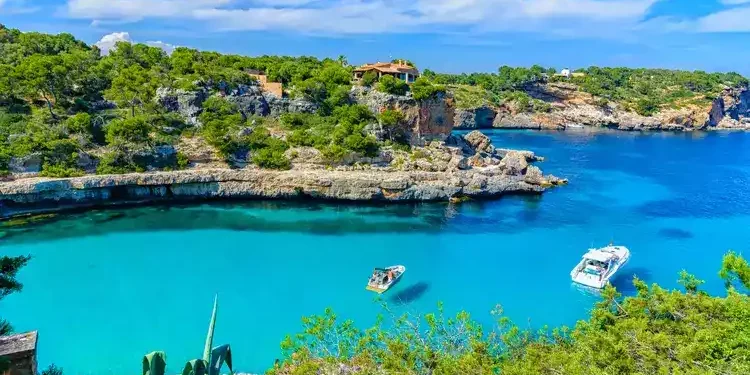Considering a move to Spain?
Here’s my list of things you need to know before taking the plunge on this European country…
1. Spain Offers A Wealth Of Lifestyle Options.
With an area of 505,990 square kms (over 195,000 square miles) almost 5,000 kms (3,100 miles) of coastline, the country spans a variety of climates, topographies, languages, cultural traditions, and cuisines.
Spain has a lot to offer, from beach towns on the Costa del Sol to historic towns in the central highlands. There are also ski resorts in the Pyrenees and big cities like Madrid and Barcelona. You can even find remote villages off the grid.
Define your criteria, pick a couple of areas, and check them out for yourself.
Even if you watch every single YouTube video on your area of choice (which was basically how my husband and I whiled our time away during COVID-19 lockdowns and evening curfews), you’ll be surprised how different a place can look and feel when you’re there in person.
Start Your New Life Today, Overseas
2. Life In Spain: There Is A Language Barrier… Even If You Speak Spanish.
Some autonomous regions, like Catalonia and Valencia, have their own languages (Catalan and Valencian), and they’ll tell you in no uncertain terms that it’s not “just a dialect.”
Other regions, such as Andalucía, have strong dialects.
Add to that the fact that the Spanish like to talk at speeds nearing those of their high-speed trains, and you can see how it’s easy to get lost.
But don’t let that discourage you. Keep studying and practicing, and things will get easier, especially if you really immerse yourself.
I try to read everything I can lay eyes on, from billboards to signage to local newspapers… and I’ll never ask for the English version of the menu.
Another great way to learn is to watch Spanish series on Netflix. My current favorite is Las Chicas del Cable.
And until I get fully fluent and speak Spanish, I keep reminding Spanish people to talk slowly. Despacio, por favor.
Start Your New Life Today, Overseas
3. Moving To Spain Means Your U.S. Or Canadian Driver’s License Is Not Valid.
The law requires you to have an international driving permit to legally drive in Spain, even as a tourist.
Even if your car rental company doesn’t ask you for it, you risk a fine if you get pulled over.
And if you become a resident, you’ll need to get a brand-new Spanish license, with all that entails: a theoretical test, driving lessons, and a road test—all in Spanish, of course.
We’re not at that point yet, but we’ve heard of even experienced drivers failing the road test multiple times. Pack your patience.
As a bonus tip, I’d recommend you learn to drive stick shift. Being limited to vehicles with automatic transmission will make everything more expensive, from car rentals to driving lessons and tests to buying a vehicle…
4. When You Move To Spain Pay Attention When You Fill Your Tank.
Gasoline and diesel are both fuels that come from the same pump. They have different nozzles, but it’s simple to choose the wrong one.
It happened to us (ahem, my husband) on our first day in Spain. On the way from Málaga Airport to our destination, Murcia, we had to fill the tank.
Grumbling about the nozzle not fitting properly into the tank opening, my husband realized his mistake when he noticed the smell of diesel. By then, the tank was three-quarters full.
The gas station attendant patiently arranged a tow truck (on a Sunday during siesta time; I’m sure that was no easy feat), and two hours and 240 euros later we were on our way again, the rental car thankfully unscathed.
Apparently, this happens more often than one would think. Almost every time we tell that story, someone owns up to having made the same mistake…
Start Your New Life Today, Overseas
5. You Need Private Health Insurance When You Arrive To Spain.
Spain is known for its world-class health care system, which is very affordable and in certain cases, even free.
However, in order to get residency, you must have private health care that provides coverage that is comparable to the public system coverage, meaning your plan can’t have any co-pays or initial waiting periods.
For us—a couple between 55 and 60—the monthly cost of such a plan starts at around 200 euros a month.
Companies offering such plans include Adeslas, Sanitas, and Asssa. You need to ask for a plan that will be accepted for residencia.
I have been told that one may get a bit of a deal when buying it through the bank where you have your main bank account.
Start Your New Life Today, Overseas
6. Prepaid Cell Phone Plans Are Extremely Cheap.
We pay 10 euros per 30 days and get 10 GB of data, unlimited calling within Europe, and 200 minutes of overseas calls.
This is already a good deal, but the kicker is that when we signed up, the provider offered a limited-time bonus of an extra 30 GB of data, so we have a staggering 40 GB.
This bonus has been renewed every month for the past few months, but even when it ends, I’ll be fine, as I have yet to use up the basic 10 GB…
You may have noticed that the plan doesn’t include text messages, but this is also not a problem since most people here use WhatsApp.
I’d venture a guess that there are other cheap prepaid plans that do include text messages as well, but for us, the data volume was more important.
7. The Food Culture Here Is Different Than In North America.
You’ll rarely see people eating or drinking coffee while walking… and if you do, they’re probably Americans or Canadians.
People in Spanish cities tend to eat late. Lunch is typically between 1:30 and 4 p.m.; dinner doesn’t start before 9 p.m.; and they tend to linger after their meal.
To bridge the time between the end of the workday and dinner, people get together for tapas and drinks.
Eating and drinking out is relatively inexpensive when you move to Spain, you can typically find a three-course lunch menu (menú del día) for 10 to 15 euros, and that includes a glass of wine, beer, or pop.
Tapas run from 2.50 to 8 euros; a small beer (caña) will set you back around 2 euros.
Dinner tends to be à la carte (except for the more touristy places) and will cost a bit more, but bear in mind that the prices you see are the prices you pay: tax and gratuities are already included.
Leaving a small tip by rounding up your bill will be appreciated, but it’s not expected.
There’s no tip option on the credit card machine, so if you want to put your tip on your card, you have to tell the waiter or waitress the total amount you want them to put through.
8. You Can Bag Bargain Winter Rentals On The Spanish Costas.
A lot of people who move to Spain and have vacation properties in coastal resorts will rent them out cheap for longer stays during the low season (typically between October and April).
On the Costa Blanca, you can snap up a three-bedroom, two-bathroom house with a private pool for 650 euros per month (plus utilities).
On the Costa del Sol (also known as Costa del Golf thanks to its 70-plus golf courses), we rented a two-bedroom, two-bathroom apartment with a sea view, just a five-minute walk from the beach, for 725 euros (US$777). That included utilities, high-speed internet, and cable TV.
It’s a perfect set-up to just spend winter in the sun while your friends back home are shoveling snow.
But it also makes for an ideal home base from which to conduct your search for a permanent home.
Sincerely,
Anja Klingler-Brito
Contributor, Overseas Living Letter










